Another Chess Culinary Master Class by Kosteniuk
Hello everybody!
In connection with my relationship with the Norwegian Seafood Export Council, I will host a "Culinary Master Class" in St. Petersburg, Russia, tomorrow Friday May 20, 2011 at the Stroganoff Steak House.
We will teach cooking and playing chess to St. Petersburg children. First I will teach how to cook a delicious dish, then while the dish is in the oven, I will have time to play a chess simul with the kids! And then finally we will get to eat the dish!
Is that not a great combination, chess & fine food? Actually eating fish which contain Omega-3 oils is most useful, I talk about it a lot in the English Press Release, have a read.
This is a similar event to the one that took place in Moscow in November 2010 (see Press Release of 30 November 2010 and photos of the November event).

Click on poster to see bigger
The Norwegian Seafood Export Council presents
Culinary Master Class by World Chess Champion Alexandra Kosteniuk
"Menu for Champions" - a part of Fiskesprell Communication Campaign
Media Release
May 20, 2011
On May 20, 2011 in St.Petersburg the Norwegian Seafood Export Council presented the culinary master class for children coached by International Grandmaster, 12th Women's World Chess Champion Alexandra Kosteniuk. Ms. Kosteniuk was assisted by Aleksander Denissov, chef of Marco Polo restaurant and winner of the restaurant festival in St.Petersburg in 2010. The project’s partner was the Children's Culinary Club of St.Petersburg led by Ksenia Zhuravlyova.
Olga Gilerovich, Director of NSEC Communications in Russia, attended the master class. "The goal of the master class is to deliver information about the health benefits of fatty fish and Omega 3, which is particularly important for children who are growing and have to master various tasks both at school and at home. Incidentally, a special project known as Fiskesprell was designed and launched in Norway to increase seafood consumption among children", Olga says. – Norwegian Salmon is very delicious, therefore children are likely to enjoy eating it from early years. Norwegian Salmon offers multiple cooking opportunities for the whole family. Our collaboration with Alexandra Kosteniuk began in 2010 in Moscow from the awareness that every child is potentially a champion in something. Knowing what reigning and future champions actually eat is vital both to parents and their children. Today we continue to promote the Menu for Champions in St. Petersburg."
In addition to cooking with children (the original recipe was Norwegian Salmon in Puff Paste with Partridge Berry Jam and Orange Carpel ), Alexandra held a small chess simul with the young master class participants and journalists. "There is a genius living in every child. The task is to discover it", says Alexandra. "A human grows by trying and learning new things, so the greater the knowledge acquired in childhood, the richer and more colorful is the future life. Any skills acquired in childhood will be remembered forever, therefore, it is essential to focus on child's all-round development."
Seafood is brain food, and Omega 3 fatty acids help prevent both learning difficulties and dyslexia.
Sixty percent of our brain consists of fat. Scientists believe that at least 30% of this fat is Omega 3 fatty acids. These Omega 3 acids are necessary to develop the cells in our body. Even though we do not produce additional brain cells after the age of two years, the brain cells grow and develop "tendrils" to other cells, which is important for learning. This is particularly vital for children who are growing and have to master small and large tasks both at school and at home. Children need a constant and good supply of Omega 3. This enables children to maintain their concentration at a peak level throughout the entire school day, acquire knowledge and become intelligent. We can only take in Omega 3 through the food we eat – our body cannot produce it. We find Omega 3 primarily in fatty fish like salmon, trout, mackerel, and herring. So, let children and parents consume Norwegian salmon on a regular basis throughout the year.
RECIPE
Norwegian Salmon in Puff Paste with Partridge Berry Jam and Orange Carpel
Take the following for 1 serving:
Norwegian Salmon fillets 50 g
Marinade:
Orange juice 100 ml
Soya sauce 10 g
Honey 5 g
White pepper 1 g
Cut Norwegian Salmon fillets into squares sized 3.0 by 3.0 cm before putting it into the marinade for 2-3 minutes. Wait till Norwegian Salmon absorbs the desired flavor, then put it on tissue to remove excess moist.
Ready-to-bake puff paste (Talosto brand) 50 g
½ egg (yolk) 1 ea.
Sesame seeds 5 g
Basil in oil 2 g
Roll puff paste to make a sheet and into four straps each sized 1.0 by 10.0 cm. Put the straps onto each other to imitate a snowflake and put the marinated Norwegian Salmon in the center. Wrap the fish piece into paste straps before brushing with yolk and coating with sesame seeds. Bake in oven for 10 minutes at 180 degrees.
For decoration:
Dill 3 g
Partridge berry jam 30 g
Orange 20 g
Cress 5 g
Put the baked salmon balls on a plate. Decorate with partridge berry jam, orange carpel and cress.
For more information, please contact:
Olga Gilerovich, Director of NSEC Communications in Russia
Phone: 8 (916) 652-1763
gilerolga7@gmail.com, gilerolga@list.ru
www.seafoodfromnorway.ru
http://newseledka.livejournal.com/
Fiskesprell project: www.zdr.ru
***
Alexandra Kosteniuk
Alexandra was born in 1984 in Perm, Russia. She won her first international tournament at the age of ten. That victory was followed in 1996 by winning the World Chess Under-12 Championship for girls. At the age of fourteen Alexandra Kosteniuk was named the world's youngest Woman Grandmaster. Year 2004 was marked with the Grandmaster title among men. Alexandra is twice Women's World Champion in Chess960 (Fischer Random Chess).
Since 2006 Alexandra has been leading her children's Chess School focused on assisting children in their first steps in the world of chess and uncovering the exciting and intriguing black-and-white kingdom to children. The key thing is to get children interested and make them want to continue at higher chess levels after the very first introduction to chess essentials. In teaching chess Alexandra relies on her own original methods with all the classes designed in exciting playing format with due regard for psychological and physical features of pre-school children. "After learning to play chess at the age of five, I have been continuously discovering the game's endless opportunities", says Alexandra. "In fact, every day I learn something new about this game that has become a part of my life."
Under-10 and Under-12 European Champion (1994, 1996)
Three-times Under-12/Under-14 World Chess Champion (1996-1998)
World Chess Vice Champion (2001)
European Chess Champion (2004)
Champion of Russia (2005)
Women's World Chess Champion (2008-2010)
Winner of the World Intellectual Games (2008)
Winner of the First Blitz Chess World Cup of the PCO (2009)
Two-times European Team Chess Champion in Russia's National Team (2007, 2009)
Winner of 2010 World's Chess Olympiad in Russia's National Team
Alexandra Kosteniuk
alexandra@kosteniuk.com
www.chessqueen.com
Aleksander Denissov, St.Petersburg, Russia
Prize-winner, Norwegian Seafood Festival 2010; bronze prize winner, Baltic Culinary Star 2008 chefs' competition; gold prize winner, Saphire Dish 2007, Jacinth Dish 2009 of the Precious Dishes of St.Petersburg series; member, Council of the Culinary College, Academy of Hospitality; chef-consultant, Academy of Hospitality; member, Russia's National Guild of Chefs; member, Chefs' Club, St.Petersburg. Chef, Marco Polo Hotel.
Project Partner: Children’s Culinary Club
Ksenia Zhuravlyova, the mastermind of the Children's Culinary Club, was born in St.Petersburg. She graduated from the Department of History of the University is St.Petersburg. Ksenia's work record includes various media jobs (such as a journalist, editor, photographic editor and photographer) in St.Petersburg and Moscow. Gradually she came to culinary and restaurant business as her current professional area of expertise. Ksenia's first experience in working with children was in the charity project Children's Rights To Children that she implemented in collaboration with the Commissioner for Child's Rights. Ksenia established the Children's Culinary Club in 2007 to pioneer serious approach to bringing culinary knowledge to children.www.vkusclub.ru
Fiskesprell Program in Russia
The Norwegian Seafood Export Council is pursuing Fiskesprell communication program designed in Norway to improve the quality of children's diet in kindergartens and children's public institutions. The key question posed in the program is: Children do like fish. Are the adults aware? A child will understand it much faster when told what he or she is going to learn after trying certain food. New skills take shape very much during decision-taking about what the child wants/does not want to try. Any kid who is often reminded what he or she dislikes is unlikely to be willing to try new food. When told that different foods may have different taste and when allowed to decide themselves what is tasty and what is not, children tend to develop positive attitude to any foods.
No child is born with a liking for chocolate and a dislike for fish. The concept of "fish" implies a lot: cod, saithe, salmon, mussels etc. Versatility of raw seafood offers an opportunity to make multiple foods. Therefore, if a child says he or she "dislikes fish", offering salmon with pasta, caviar, fish patties or mackerel in tomato sauce might be a good idea.
Over the years children experience change of their taste sensations produced by food. Those who do not eat much today may well start showing great appetite tomorrow. Therefore, it is vital to grant kids the right of selecting their food and to avoid reminding what they might dislike.
Fiskesprell
A joint effort to increase seafood consumption among children
The project's name Fiskesprell is a composite of the Norwegian "fisk” (meaning "fish") and "sprell”, the word used to describe both the way a fish wriggles when it jumps and also people who are full of life and vitality.
A little about the background to Fiskesprell.
As far as diet development is concerned, Norway faces many of the same challenges caused by poor diets as other European countries, such as overweight and lifestyle illnesses, The plan of action highlights the fact that, from a general health point of view, it is beneficial for the population to increase its consumption of fish, both lean and fatty varieties. And in particular that children, youngsters and young adults should increase their consumption of seafood -in order not to deny themselves the beneficial health effects that seafood provides. One specific measure is therefore to implement initiatives aimed at children and young people to encourage them to increase their consumption of seafood.
The Ministry of Health and Care Services, the Ministry of Fisheries and Coastal Affairs and the Norwegian Seafood Export Council joined forces to implement the initiative – and by this the Fiskesprell project was born.
Who makes up the target segment for Fiskesprell?
The choice was in favor of public arenas where the chances of encountering all the different social classes are greatest. Consequently, our chosen arena was kindergartens and schools . The staff can influence what children learn to like and dislike and what they consider a natural part of their diet, and consequently what they eat when they are older.
What do we know about children’s diets?
Despite the focus on children’s diets over the last several years, children are still consuming:
too much sugar
too little dietary fiber
too much fat, particularly saturated fats
too little vitamin D and too little iron
Over 90% of 2-year-olds consume more saturated fats than the recommended amount, and 80% of 4-year-olds consume too much sugar .
Children should:
drink less sweet drinks
(squash and soda water)
eat much less sweets and sweet food
eat more coarse bread and corn products
eat varied vegetables and fruit
eat more fish and seafood
We can not only blame the children - it is we adults who have to do something about it!
Why should children (and adults) eat more seafood?
Children who eat seafood gain many benefits. Fish and other seafood are good sources of nutrients not found in significant quantities in other types of food.
These nutrients include:
vitamin D, which is important to good bone health;
marine omega-3 fatty acids, which are important to the development and function of the brain, as well as to the heart and the immune system;
iodine, which is important for energy conversion;
selenium, which is important to the immune system;
and proteins of high quality.
So children and young people should eat more seafood – but do they like it?
I do not know if this is the case where you come from, but in Norway I often hear adults say that children do not like fish. But no one is born with a liking for chocolate – and no one is born with a dislike of fish . So why has this myth that children do not like fish taken root? Well, if we ask the children directly, they will actually tell you that they do not like fish... But when I ask if they like pasta with salmon, or fish fingers – yes, they like those! Yet they claim they do not like fish! What can we learn from this? Allow me to recount some important considerations that we try to convey in our work with children and seafood:
We must stop asking children if they like fish. Ask instead if they like different dishes in which seafood is an ingredient. For instance, pasta with salmon. After all, no one asks children if they like cow or pig.
The adults’ attitudes are important. Children listen to what we say; they see our facial expressions.
Children best like food they have made themselves. Only adults think that food tastes best when others have made it. Children love to participate in making food. And it is a very good learning process. Therefore we encourage kindergartens and schools to make food preparation and cooking an educational activity.
As we grow up, our tastes change. What tasted good yesterday is not necessarily good today, but suddenly it can taste good again tomorrow. Therefore we should not be reminding children what they like and dislike, but let them taste and make up their own minds.
Maintain the focus on the joy of food and make seafood a natural part of the diet. Eating fish does not require special rewards or praise.
So the answer to the question is: yes, children do like seafood. If they say no, it is probably because someone has taught them to say it – either that, or the cook has not done a particularly good job.
Fiskesprell has therefore developed a course for kindergarten staff which focuses on:
knowledge of children’s diets, knowledge of seafood and the health benefits
providing inspiration and practical skills in preparing seafood in kindergartens
providing tips on how to use food and mealtimes proactively in the day-to-day educational work.
NORWEGIAN SEAFOOD EXPORTS UP IN APRIL
The value of exports of Norwegian seafood in April totalled NOK 4.2 billion. This is an increase of NOK 587 million or 16.3% compared to April 2010, according to the latest figures from the Norwegian Seafood Export Council. This year to date, the value of exports of Norwegian seafood totals NOK 18 billion, an increase of NOK 2.2 billion or 13.3% compared to the same period last year. This is an export record for the month of April and also for the January-April period. “Exports of Norwegian seafood are setting new records because there is a market demand for more Norwegian seafood combined with higher prices. The growth we are seeing in Norwegian seafood exports is attributable primarily to exports of Norwegian Salmon, although herring, mackerel and clipfish products are also contributing to increased export levels,” says Egil Ove Sundheim, director of market information with the Norwegian Seafood Export Council.
Exports of Norwegian Salmon showing continued growth
The value of exports of Norwegian Salmon in the first tertiary was NOK 10 billion, up by NOK 1.4 billion or 17% from the same period last year. In April, the value of Norwegian Salmon exports increased by NOK 356 million or 16% compared to April last year. The average price for whole fresh Norwegian Salmon in April was NOK 42.69, up from NOK 38.82 in April 2010. France, Poland and Russia are the biggest importers of salmon from Norway.
Growth in exports of herring and mackerel
In the first tertiary, exports of herring increased in value by NOK 349 million to a total of NOK 1.8 billion, an increase of 24%. In April, the value of exports totalled NOK 236 million. The value of exports of mackerel in the first four months of the year increased by NOK 212 million to a total of NOK 644 million. Exports in April were valued at NOK 65 million. Exports of clipfish up
Exports of clipfish in the first four months of the year increased in value by NOK 116 million. The export figures for the different types of clipfish are as follows:
Cod exports increased in value by NOK 73 million to a total of NOK 659 million
Saithe exports increased in value by NOK 63 million to a total of NOK 464 million
Ling exports decreased in value by NOK 6 million to a total of NOK 43 million
Torsk exports decreased in value by NOK 17 million to a total of NOK 33 million
Exports of salted fish continue to grow
Exports of salted fish in the first four months of the year increased in value by NOK 125 million to a total of NOK 532 million. In April, exports totalled NOK 140 million, an increase of NOK 16 million compared to April last year. Cod accounts for the majority of exports so far in 2011 with a value of NOK 526 million.
Chess Queen™ Alexandra Kosteniuk
12th women's world chess champion
Labels: Chess Queen Alexandra Kosteniuk, culinary master-class, Norway




























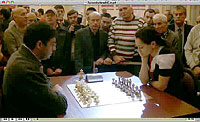
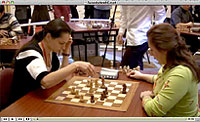
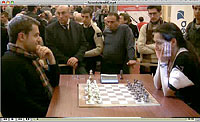

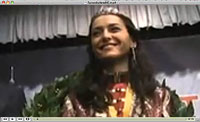
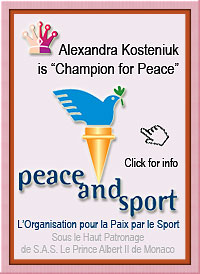
1 Comments:
At May 19, 2011 at 10:13 AM , Anonymous said...
Anonymous said...
Deliiiiiicccccciiiiioooooooooooooouuuuuuuuuuuuus
Post a Comment
Note: Only a member of this blog may post a comment.
Subscribe to Post Comments [Atom]
<< Home